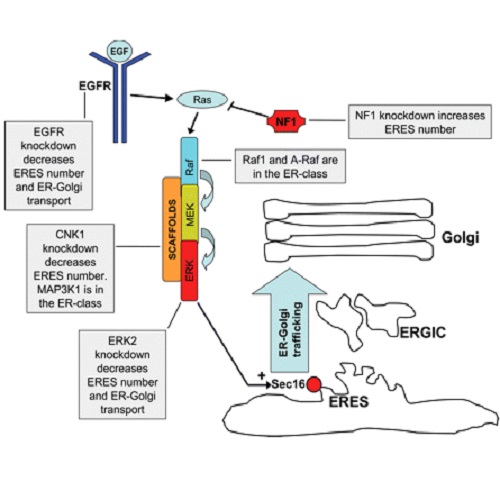MAPK signaling to the early secretory pathway revealed by kinase/phosphatase functional screening.
To what extent the secretory pathway is regulated by cellular signaling is unknown. In this study, we used RNA interference to explore the function of human kinases and phosphatases in controlling the organization of and trafficking within the secretory pathway. We identified 122 kinases/phosphatases that affect endoplasmic reticulum (ER) export, ER exit sites (ERESs), and/or the Golgi apparatus. Numerous kinases/phosphatases regulate the number of ERESs and ER to Golgi protein trafficking. Among the pathways identified, the Raf-MEK (MAPK/ERK [extracellular signal-regulated kinase] kinase)-ERK cascade, including its regulatory proteins CNK1 (connector enhancer of the kinase suppressor of Ras-1) and neurofibromin, controls the number of ERESs via ERK2, which targets Sec16, a key regulator of ERESs and COPII (coat protein II) vesicle biogenesis. Our analysis reveals an unanticipated complexity of kinase/phosphatase-mediated regulation of the secretory pathway, uncovering a link between growth factor signaling and ER export.

- J. Cell Biol. 2010 Jun 14;189(6):997-1011
- 2010
- Cell Biology
- 20548102
- PubMed
Enabled by:
